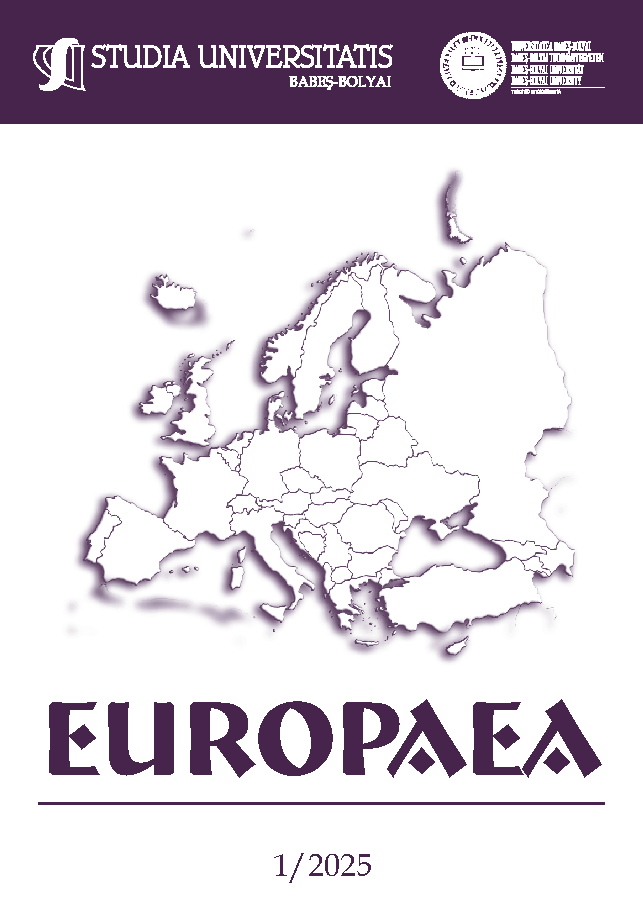Bridging Cultures, Leading Peace: Leadership and Interculturalism in the Israel-Egypt Peace Negotiations
DOI:
https://doi.org/10.24193/subbeuropaea.2025.1.08Keywords:
Israeli-Egyptian Peace Treaty (1979), Middle Eastern diplomacy, political leadership, intercultural competence, conflict resolution, diplomatic engagement, international relations, empathy, symbolic communication, cultural sensitivityAbstract
The 1979 peace treaty between Israel and Egypt marked a historic turning point in Middle Eastern diplomacy, establishing the first formal recognition of Israel by an Arab state. This article revisits the Israeli-Egyptian peace process to examine the interplay between political leadership and intercultural competence in the achievement of breakthrough agreements. While the roles of Anwar Sadat, Menachem Begin, and U.S. President Jimmy Carter have been widely acknowledged, this study argues that visionary and courageous leadership, though indispensable, was not sufficient on its own. Instead, it contends that the leaders' ability to navigate intercultural dynamics—through empathy, symbolic communication, and cultural sensitivity—was a critical enabling factor that amplified the effectiveness of their leadership. Drawing on historical analysis and theoretical perspectives from international relations, the article explores how intercultural competence contributed to building trust, overcoming misperceptions, and sustaining diplomatic engagement. By integrating leadership theory with insights from intercultural communication, this study advances a dual proposition: that exceptional leadership is a necessary condition for landmark peace agreements, and that its success in culturally complex conflicts depends significantly on the leader’s intercultural acumen. The findings contribute to a deeper understanding of the conditions under which diplomatic breakthroughs occur and offer practical implications for contemporary conflict resolution and negotiation strategy.
References
1. Blatter, J.; Haverland M. (2012), Designing Case Studies: Explanatory Approaches in Small-N Research. London: Palgrave Macmillan.
2. Burns, J.M. (1978), Leadership. New York: Harper.
3. Byram, M. (1997), Teaching and Assessing Intercultural Communicative Competence. Bristol: Multilingual Matters.
4. Creswell, J. W.; Poth C.N. (2024), Qualitative Inquiry & Research Design: Choosing Among Five Approaches. Thousand Oaks CA: Sage.
5. Dayan, M. (1981), Breakthrough: A Personal Account of the Egypt-Israel Peace Negotiations. New York: Alfred A. Knopf.
6. Denzin, D.K.; Lincoln, Y.S. (eds.) (2005), The SAGE Handbook of Qualitative Research (third edition). Thousand Oaks: Sage.
7. Eilam, D. (2014), The Next War between Israel and Egypt: Examining a High-intensity War between Two of the Strongest Militaries in the Middle East. Elstree: Vallentine.
8. Gudykunst, W. B. (2005), Theorizing About Intercultural Communication. Los Angeles: SAGE.
9. Hall, E. T. (1976), Beyond Culture. New York: Anchor Book.
10. Hampden-Turner C.; Trompenaars, F. (2012), Riding the Waves of Culture: Understanding Diversity in Global Business. New York: McGraw-Hill.
11. Hofstede, G. (1980), Culture’s Consequences: International Differences in Work-Related Values. Los Angeles: SAGE.
12. Koehane, R. (1984), After Hegemony: Cooperation and Discord in the World Political Economy. Princeton: Princeton University Press.
13. Lewicki, R. J., Barry, B., & Saunders, D. M. (2010), Essentials in Negotiation. New York: McGraw-Hill.
14. The Washington Instute for Near East Policy (2009), “The Egyptian-Israeli Peace: Lessons for Today”, Policy Report, 24 March, 2009, https://www.washingtoninstitute.org/policy-analysis/egyptian-israeli-peace-lessons-today.
15. Waltz, K. (1979), Theory of International Politics. Boston: Addisson-Wesley.
16. Weber, M. (1947), The Theory of Social and Economic Organization. Los Angeles: Free Press.
17. Wendt, A. (1999), Social Theory of International Politics. Cambridge: Cambridge University Press.
18. Yin, R. K. (2017), Case Study Research: Design and Methods (sixth edition). Thousand Oaks CA: Sage.
Downloads
Published
How to Cite
Issue
Section
License
Copyright (c) 2025 Studia Universitatis Babeș-Bolyai Studia Europaea

This work is licensed under a Creative Commons Attribution-NonCommercial-NoDerivatives 4.0 International License.



